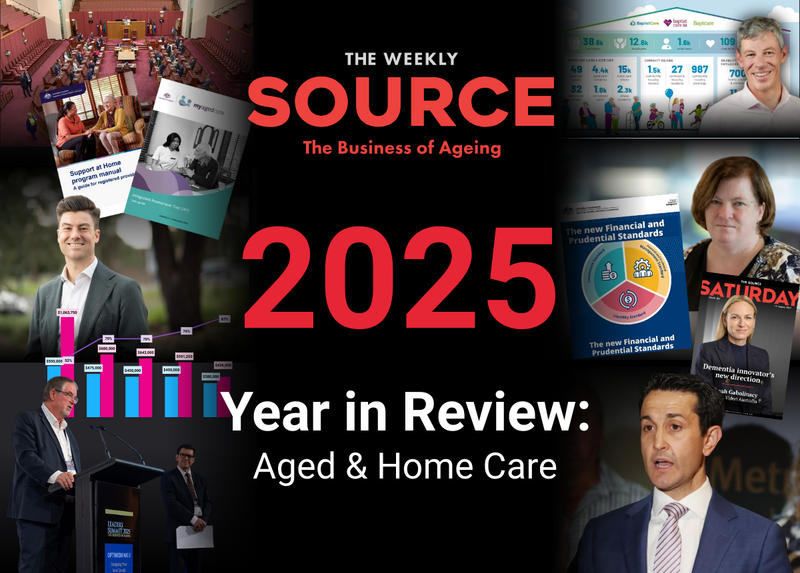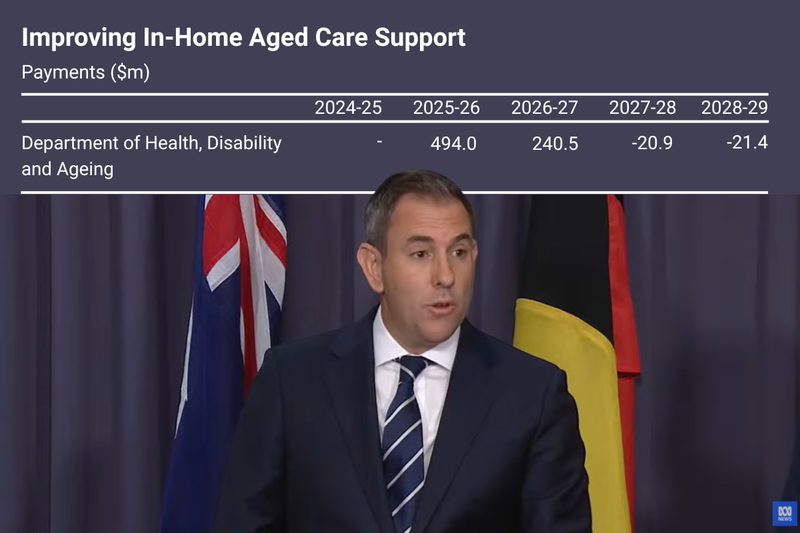Reforms to drive consolidation
Aged care operators need to be on the front foot in terms of their workforce planning, technology investment and board leadership – or risk being left behind under the next round of reforms. Despite legislative delays, residential and home care...

Aged care operators need to be on the front foot in terms of their workforce planning, technology investment and board leadership – or risk being left behind under the next round of reforms.
Despite legislative delays, residential and home care providers should continue to plan for the Government’s reform agenda – and be prepared to shift quickly to adapt to any changes.
Back on the agenda when Parliament resumes, the Aged Care and Other Legislation Amendment (Royal Commission Response No. 2) Bill 2021 will see several key reforms rolled out including the new Australian National Aged Care Classification (AN-ACC) funding model for residential aged care and the expanded Independent Health and Aged Care Pricing Authority.
But the challenge for providers will be the timing.
Richard Ainley, Partner, Aged Care Health & Wellbeing at PwC Australia, points out that aged care operators will need to navigate a significant program of change and transformation across three levels:
The survival lens – working across the current financial, workforce and COVID-19 challenges
The compliance lens – preparing for the next round of reforms including AN-ACC, the changes to serious incident reporting for home care and the new governance requirements
The transformative lens – looking at the new service, workforce and digital models that will support consumers, families and communities and their expectations in the future
“The risk is we don’t take the time and make the space for not just strategic thinking and planning, but strategic action,” he said.
“If providers are thinking about not just surviving and complying but being a leading provider and having a competitive advantage, they need to look further out in terms of the reform program. That is where we also have the challenges of a much greater supply of Home Care Packages that are coming through the system and the phasing out of the residential aged care licensing system.”
So, what should providers be considering now?
The AN-ACC
For residential care providers, the major disruption will be the introduction of the AN-ACC in October.
With some providers reporting that they are yet to receive their independent assessments – while other assessments are now out of date – the advice is to look at your budgets and whether they will be fit for purpose under the new funding model.
“When I talk to providers, many are simply unprepared,” said Alison Choy Flannigan, Partner at Hall & Wilcox.
“They have based their budget on their AN-ACC projections, but AN-ACC only pays for care. It doesn’t pay separately for head office, quality assurance, or regulatory compliance, so they need to be able to work out whether they are financially sustainable under the AN-ACC model.”
Amber Cartwright, Director at Ansell Strategic, says it is also beneficial for organisations to understand the AN-ACC tools and how to undertake those assessments.
“I would be upskilling people in my team to make sure that they know how those work, and then they can be doing their own proxy types of checks,” she said.
“Otherwise, they could also be looking at other homes that have been assessed or residents that have a similar profile to try and estimate what their level of funding would be and therefore their level of care minutes.”
Workforce
The other component of AN-ACC is workforce.
While not mandatory, providers will be assessed on whether they are meeting the 200 direct care minutes threshold from October ahead of the introduction of star ratings in December. Amber says the main concern of Ansell Strategic’s residential care clients is how they will meet this initial requirement.
“Some of them are resigned to the fact that they will not meet it and it will impact on their star ratings because they are already struggling to meet and fill shifts,” she said.
She advises operators to look closely at their workflow and how they can best utilise their RNs.
This includes reassessing the roles that are not included in the 200 care minutes such as allied health and lifestyle staff.
“Start to look at how you may be able to merge roles and build in a lifestyle component so that you are not blowing your budget and residents are still receiving those services,” said Amber.
This will also require having the right systems in place to ensure your rostering is efficient, according to Tyler Fisher, Senior Product Manager & Data Scientist at Mirus Australia.
“I
f your service is guided by the Quality Standards and the care needs of residents, then everything that comes after that should be taken care of,” he said.
“But that requires efficiency and care management systems, and rostering systems that can improve that visibility for an organisation.”
Home care
Home care is also in for a shake-up with the sector now just 12 months away from the introduction of the new Support at Home Program, which will see a move to a more NDIS-style system of funding.
While the price list is yet to be released, providers can look to the NDIS to see what providers are charging for services to use as a base, said Amber – and obtain a greater understanding of their main business drivers.
“Most providers wouldn’t know the actual margins that they are receiving in a service region that they operate in,” she stated.
“We need to become more sophisticated with understanding the different drivers such as workforce qualifications and therefore pay rates, travel and service times and training, and understand on a client level if this is a viable client to service or not.”
If a client does become no longer viable to service, operators need to make some hard decisions about whether they want to continue to provide services based on their commercial or mission base.
This will come on top of the new serious incident reporting requirements as well as an increase in audits for home care and CHSP providers.
“Home care has traditionally been very light on compared to residential aged care,” said Amber.
“It is important to try to find those risks and identify any issues before the Quality Commission comes in and it becomes much more expensive to rectify them.”
Technology
Underpinning these reforms will be the need to invest in technology – but it needs to be fit for purpose too.
“S
o much depends on the quality of the tech,” said Mark Bryan, Legal Content Consultant at CompliSpace.
“If it’s well-designed, easy to use and tailored to a home’s particular needs, it’s a huge help. But if the tech is poorly designed, or staff aren’t given the skills to understand and use it, then it’s just another source of stress.”
PwC says all operators – regardless of their size – can benefit from technology in terms of their business sustainability and workforce.
“Some of the more sophisticated providers are at a point where they can be developing that transformational strategy in terms of looking at new models of care, their digital investment and digital strategy in order to obtain those efficiencies and uplifts in care quality,” said Kerryn Dillon, Director Health and Wellbeing at PwC Australia.
Smaller operators can access funding for technology investment – such as the Business Improvement Fund (BIF) – and form partnerships with technology providers.
“There are ways to either replicate the benefits of scale or get access to expertise, systems, and capabilities that historically you wouldn’t have been able to access,” added Richard.
Boards
Perhaps some of the biggest changes that are coming in the next 12 months are around governance – and this will put the onus on board directors to take on an even greater leadership role in their organisations.
Alison says that boards should ensure they are familiar with their legal obligations and duties and implement strategies, including:
- scenario and contingency planning;
- budgetary and cash flow projections in consultation with financial advisors;
- updating their systems for proposed aged care pricing arrangements;
- introducing software to record compliance with the new requirements concerning RN staffing and care contact hours; and
- obtaining employment law advice on managing a flexible workforce.
Alison also recommends that all senior executives and boards have access to a dashboard that shows what has happened within the organisation and provides a risk framework.
“You can then run reports to understand trends and see whether risks have been identified,” she said.
The shift towards paid director roles is also likely to continue as the reforms focus attention on the qualifications and suitability of board members and key personnel.
Mark points out that many directors who end up on aged care boards don’t have a strong background in business or law.
“They often come to the task viewing themselves as a volunteer wanting to do some good. There’s nothing wrong with this, provided board members understand that, even as a volunteer, they have strict legal responsibilities and duties,” he said.
Further consolidation the likely outcome
This will include recognising when it is time to make the decision to exit.
“Much of the merger work we have done recently is being driven by boards being educated on their obligations and making a call as to whether they are fit for purpose and suitable,” said Rohan Harris, Principal at Russell Kennedy Lawyers.
But the key message for operators? Act now.
There will always be questions around what the Government’s reforms will look like in reality – but those that press pause risk their future survival.
“Many providers are still waiting so there has been no major movement from a strategic perspective,” concluded Amber.
“Our concern is that if you stand still for too long, you will be going backwards.”





